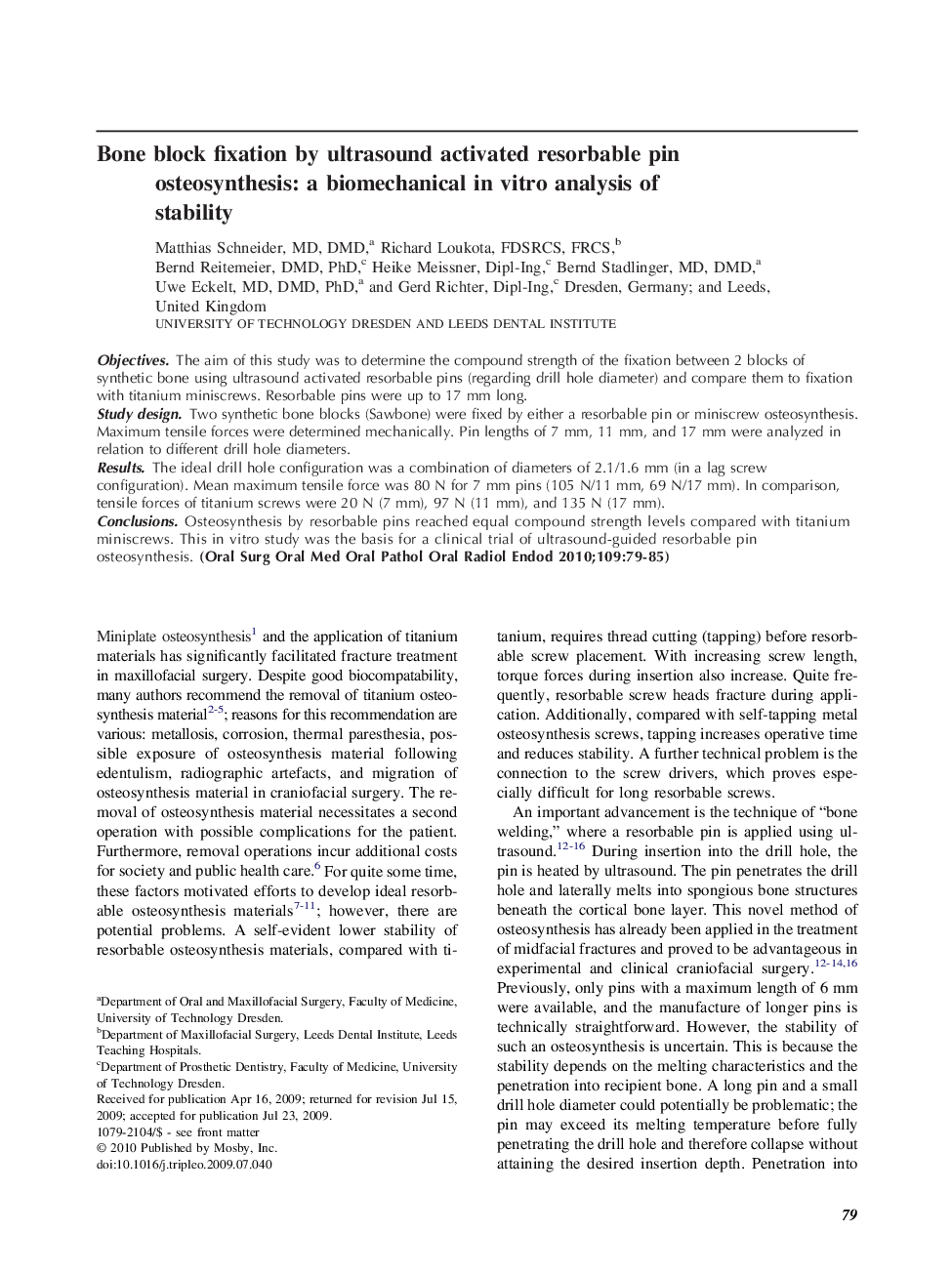| Article ID | Journal | Published Year | Pages | File Type |
|---|---|---|---|---|
| 3167731 | Oral Surgery, Oral Medicine, Oral Pathology, Oral Radiology, and Endodontology | 2010 | 7 Pages |
ObjectivesThe aim of this study was to determine the compound strength of the fixation between 2 blocks of synthetic bone using ultrasound activated resorbable pins (regarding drill hole diameter) and compare them to fixation with titanium miniscrews. Resorbable pins were up to 17 mm long.Study designTwo synthetic bone blocks (Sawbone) were fixed by either a resorbable pin or miniscrew osteosynthesis. Maximum tensile forces were determined mechanically. Pin lengths of 7 mm, 11 mm, and 17 mm were analyzed in relation to different drill hole diameters.ResultsThe ideal drill hole configuration was a combination of diameters of 2.1/1.6 mm (in a lag screw configuration). Mean maximum tensile force was 80 N for 7 mm pins (105 N/11 mm, 69 N/17 mm). In comparison, tensile forces of titanium screws were 20 N (7 mm), 97 N (11 mm), and 135 N (17 mm).ConclusionsOsteosynthesis by resorbable pins reached equal compound strength levels compared with titanium miniscrews. This in vitro study was the basis for a clinical trial of ultrasound-guided resorbable pin osteosynthesis.
